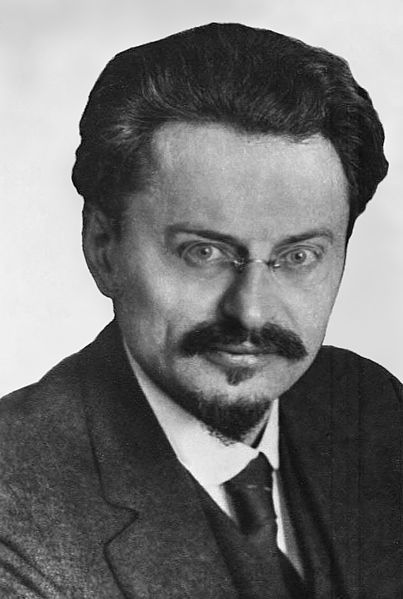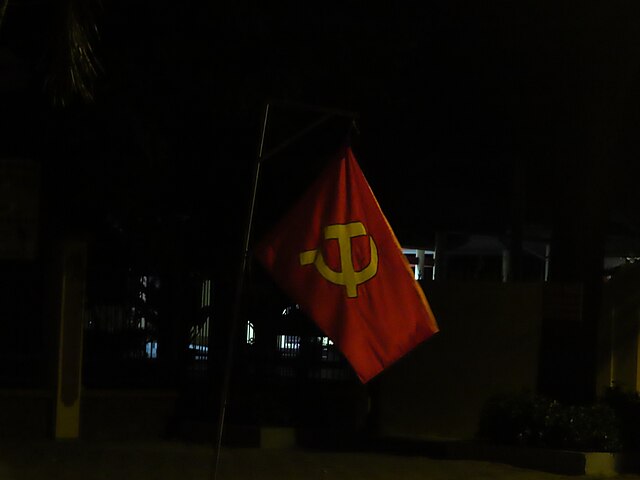Marxism–Leninism is a communist ideology that became the largest faction of the communist movement in the world in the years following the October Revolution. It was the predominant ideology of most communist governments throughout the 20th century. It was developed in Russia by Joseph Stalin and drew on elements of Bolshevism, orthodox Marxism, and Leninism. It was the state ideology of the Soviet Union, Soviet satellite states in the Eastern Bloc, and various countries in the Non-Aligned Movement and Third World during the Cold War, as well as the Communist International after Bolshevization.
Leon Trotsky exhorting Red Army soldiers in the Polish–Soviet War
Mao Zedong with Anna Louise Strong, the American journalist who reported and explained the Chinese Communist Revolution to the West
Enver Hoxha, who led the Sino-Albanian split in the 1970s and whose anti-revisionist followers led to the development of Hoxhaism
Karl Marx in 1875
Communism is a left-wing to far-left sociopolitical, philosophical, and economic ideology within the socialist movement, whose goal is the creation of a communist society, a socioeconomic order centered around common ownership of the means of production, distribution, and exchange that allocates products to everyone in the society based on need. A communist society would entail the absence of private property and social classes, and ultimately money and the state.
Thomas More, whose Utopia portrayed a society based on common ownership of property
Vladimir Lenin, founder of the Soviet Union and the leader of the Bolshevik party
Leon Trotsky, founder of the Red Army and a key figure in the October Revolution
Communist flag at night at Ho Chi Minh City, Vietnam, year 2024








